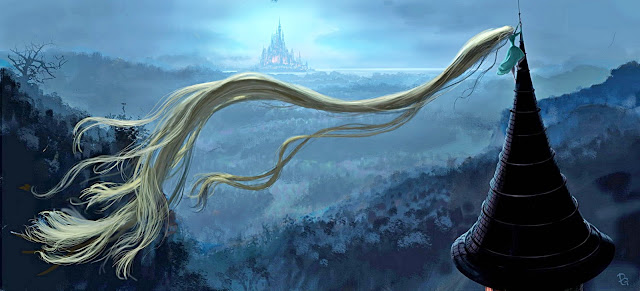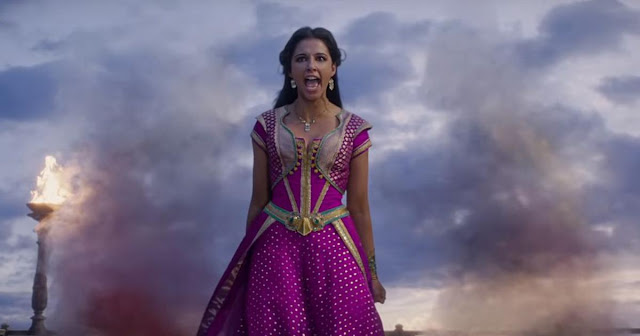The Legacy of Rapunzel
Picture a maiden with impossibly long hair trapped in a tower. What story comes to mind? Rapunzel has been a memorable icon among princess tales long before Disney got their hands on it in 2010. She is the quintessential fairy tale damsel in distress. That's not to say she was always helpless. In fact, in the Brothers Grimm adaptation, Rapunzel asks the prince to bring her silken skeins that she sews together to create a ladder so she can escape the tower herself, so she was actually more active in solving her own problems than Cinderella and Snow White. Let's get real, though. It's that amazing hair that's held our interest for all those centuries. Who hasn't dreamed of growing their hair insanely long, despite all the upkeep it would inevitably require?
Though Rapunzel became a princess through marriage, she did not start out that way. Her family's social status was unmentioned, but it was likely that they were peasants because her father needed to steal food for her mother from the witch's garden. Rapunzel is another name for the rampion plant that her mother desired to eat while pregnant with the famous long-haired maiden. When the witch learned that she was being robbed, she forced Rapunzel's parents to give up the unborn baby in exchange for the flower. This aspect of the story was left fully in tact in the opening song of Stephen Sondheim's Broadway musical, Into the Woods, one of the few fairy tale adaptations that used the Grimm version of "Cinderella" instead of the one by Charles Perrault, as I discussed in my Cinderella post. Unlike the Broadway show, the 2014 Disney adaptation of Into the Woods left Rapunzel's tragic ending largely ambiguous. Tangled had already been released at the time, and they did not want to destroy the legacy of one of their beloved characters.
Like "The Frog Prince", "Rapunzel" was faithfully retold in a haunting 1983 episode of Shelley Duvall's Faerie Tale Theatre. This episode is worth noting because it is one of the few episodes that stars Shelley Duvall herself as the leading princess, and it also incorporates Rapunzel's twin pregnancy from the original story, a detail that is commonly left out of children's retellings. The pregnancy was a large turning point in Donna Jo Napoli's novel, Zel, as mentioned in my book post. The novel focuses on Rapunzel's story from the perspective of the obsessively protective Mother Gothel. Unlike most unnamed fairy tale villains, the name "Gothel" comes from the original Brothers Grimm text, which is why it used is so many alternate tellings of the story.
In 2002, Barbie took the reigns on a "Rapunzel" movie, likely because it was one of the few fairy tales that Disney had not yet covered at the time. It was released just before Barbie's version of "Swan Lake." Unlike that adaptation, though, Barbie as Rapunzel strayed as far as could be from its fairy tale roots, keeping only character names and the prospect of being trapped in a tower. Rapunzel's hair was only long enough to reach her ankles, so the iconic image of the prince climbing her hair up the tower was shown only as a dream sequence. In fact, it had more in common with the Disney version of the story, which came out eight years later, than it did the Grimm version. It makes you wonder exactly how many sources Disney uses for their ideas. Like in the Disney version, Barbie's Rapunzel was an artist who painted pictures all over her tower. She was also stolen from the queen and king by Mother Gothel, making her a princess from birth without knowing it. A very similar plot device was recycled in the 2014 Barbie mermaid movie, The Pearl Princess.
Disney's Tangled went through many iterations before it became the beloved 2010 release it is today. It was originally slated for a 2005 released entitled Rapunzel: Unbraided about a cynical teenager from San Francisco who got cursed by a witch to live in Rapunzel's body while the real Rapunzel was trapped in the body of a squirrel. Thank goodness that didn't happen. All that remains of it is an early pre-visualization sequence and a 15-second clip. The themes they wanted to incorporate into that story were far better suited to the 2007 feature, Enchanted, which might be part of why decided to go in a different direction. Glen Keane's ability to painstakingly transform the look of hand-drawn artwork into CGI marks a milestone for animation in the release of Tangled. Disney fans all over the world were grateful that they decided to remain true to the original story with a few family-friendly changes. Instead of a rather violent scene in which the prince gets pushed off the tower with his eyes gauged out by thorn bushes that Rapunzel later heals with her tears, Disney altered the dramatic climax to show Eugene receive a fatal stab wound that Rapunzel heals almost immediately.
The movie was so successful that it recently launched an adorable television series featuring stylized animation and the original voice actors, including Mandy Moore's lovable performance as Rapunzel. It also introduces a new character, Lady Cassandra, portrayed by Eden Espinosa as everyone's favorite new lady-in-waiting. It is wonderful to see the legacy of such an iconic story live on in today's modern world. At a time when romance is no longer always relevant, it's great that Eugene and Rapunzel's love story has a place to flourish. The medieval setting of Corona, based on Disney's Fantasyland, is a breath of fresh air in a time of smart phones and social media.
Rapunzel is and always will be one of the most famous princesses of all time due to her magical long locks and curiosity about the world outside her tower. Though the Grimm tale is not entirely child-friendly, her story will continue to be told and inspire the imaginations of generations to come. This concludes my fairy tale breakdown series for the week. I hope you've enjoyed it.












Comments
One thing I am so badly wanting to find out is, that music, that very weird, strange and hypnotic sequence of notes, that musical melody phrase that starts immediately as the Mother of Rapunzel bites into a radish and you hear the crunch. I heard that very same musical melody phrase briefly on a reality show "90-day Fiance", and instantly recognized it, and it sounded as if this version had been recorded with the traditional musical instruments of a symphonic orchestra. It must be a somewhat fairly familiar piece of music to classical genre enthusiasts, but I have no idea what the name of it is or who composed it. I have searched the episode credits, blogs, information anywhere I could find, and still have know answer, so I was just wondering if you might possibly know? Thanks